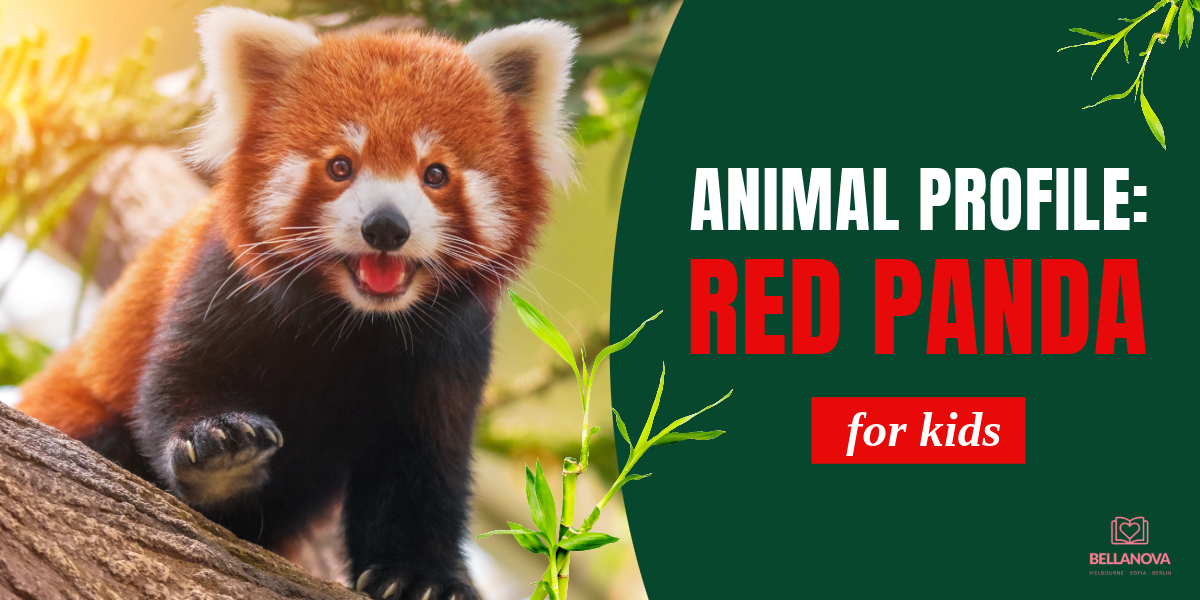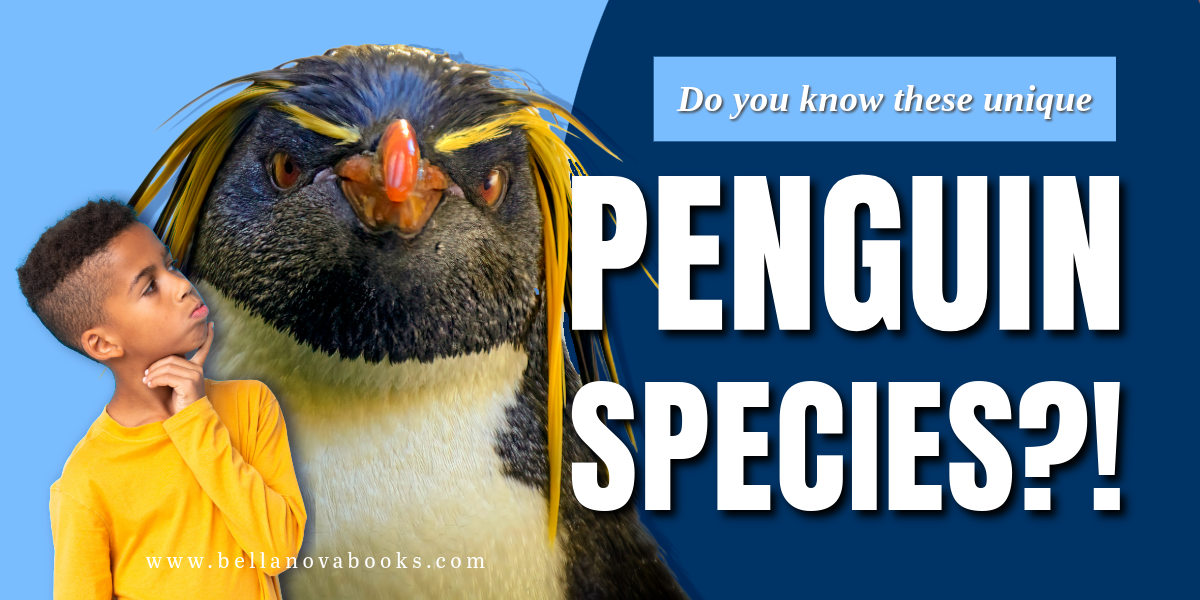
Uncovering 5 Unique Penguin Species
Do you love penguins? So do we! And what we love even more is how diverse they are. There are penguins living in Antarctica, but also in warmer climates such as the Galapagos Islands, which means they’ve had to adapt to their habitats in many wild and beautiful ways. Today, we are going to uncover five of the most unique penguin species. These incredible birds have fascinating traits and behaviors that make them truly special. Let’s dive in and meet these amazing penguin species!
Macaroni Penguin
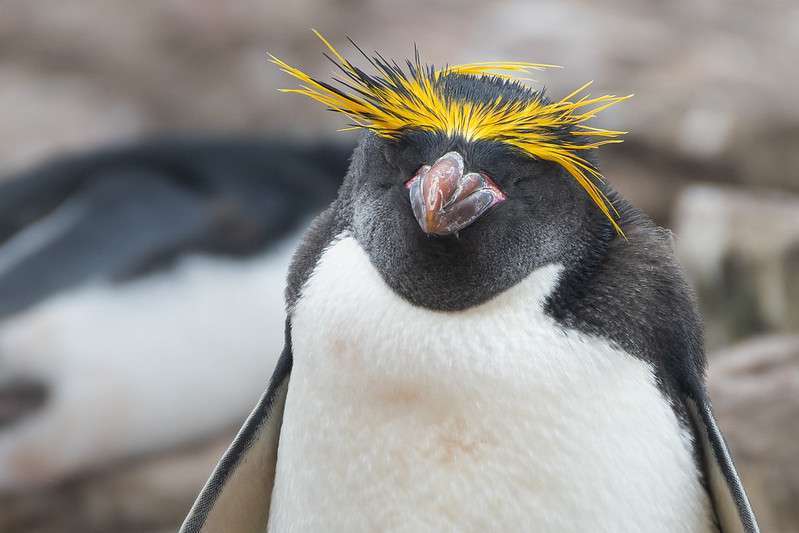
The macaroni penguin stands out with its bright yellow crest feathers, which give the penguin a unique, fashionable look. The term “macaroni” historically referred to an extravagant style. Macaroni penguins use their distinctive crest feathers to attract mates and communicate with each other.
Diet and Hunting Skills
These penguins are not just stylish; they are also skilled swimmers. They spend a lot of time in the water, diving deep to catch their favorite food—krill. Their agility and speed in the water are impressive. The macaroni penguin’s fashionable feathers and swimming skills make it fascinating to learn about.
Macaroni penguins are exceptional deep-sea divers. They can dive to depths of up to 70 meters in search of food like krill, squid, and small fish. These penguins are built for swimming, with strong flippers. They can stay underwater for up to two minutes, giving them time to hunt efficiently. Their keen eyesight helps them spot prey even in dim light. This diving ability highlights the macaroni penguin’s adaptability in the ocean.
Adélie Penguins
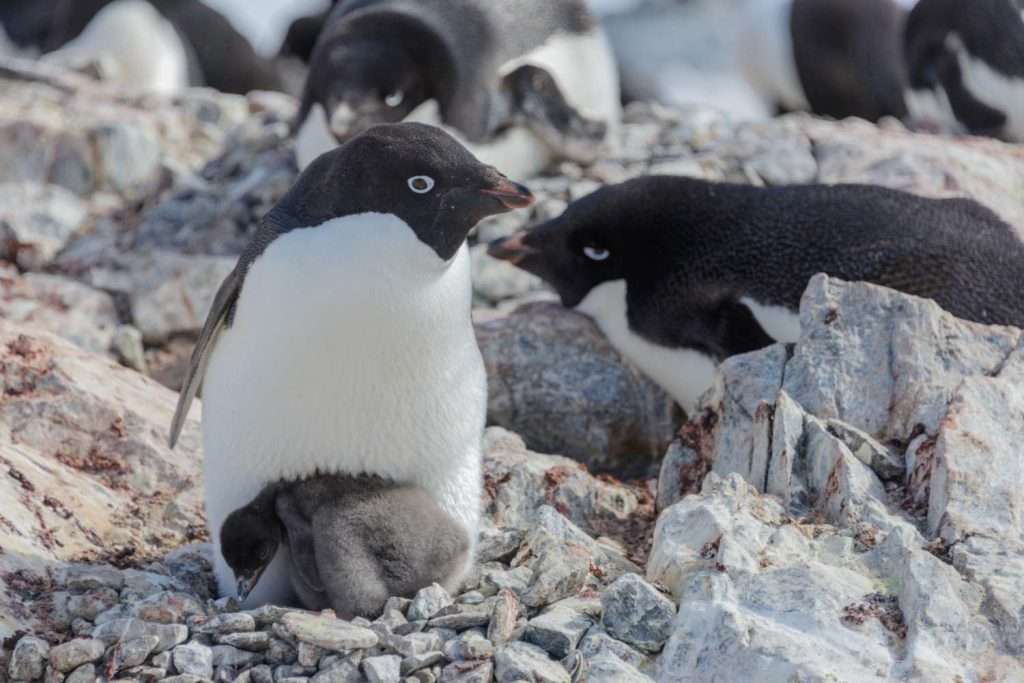
Adélie penguins are known for their playful and curious personalities. These small but spirited birds often slide down icy slopes on their bellies—a behavior called tobogganing. This sliding helps them save energy while moving across the ice.
Social Behavior
Adélie penguins are also social creatures, often seen interacting with each other. Their inquisitive nature makes them one of the most studied penguin species. In their colonies, they build nests out of stones and sometimes “borrow” pebbles from their neighbors, showing their naughty side. Their playful and social behavior helps them survive and find mates.
Nesting Habits
Adélie penguins use stones to build their nests. These resourceful birds gather pebbles to construct a stable platform to keep their eggs safe. The choice of stones is crucial; they need to be the right size. During the breeding season, male Adélie penguins often present stones to females as part of their courtship. This behavior helps build a sturdy nest and strengthens the bond between mates. The nests are built in large colonies, with each penguin fiercely guarding its collection of pebbles. This communal nesting protects them from predators and bad weather.
Rockhopper Penguins

Rockhopper penguins are recognizable by their spiky yellow and black feathers and bright red eyes. These features make them stand out and help in social interactions. The spiky feathers, called crest feathers, attract mates and deter rivals. Rockhoppers often engage in head-shaking and bowing displays, showing off their crests. Their red eyes add to their fierce look.
Agility and Movement
Rockhopper penguins are known for their agility and strength. They navigate rocky terrains with ease, hopping from one boulder to another. This combination of looks and agility makes the rockhopper penguin fascinating to watch.
Rockhopper penguins are named for their distinctive way of moving—hopping over rocks and boulders. They use their strong legs and sharp claws to leap across rugged terrains. This allows them to navigate rocky coastal habitats with agility and speed. Their hopping ability helps them access nesting sites on cliffs and rocky outcrops, offering protection from predators.
Adaptations and Survival
Rockhopper penguins also use their sharp beaks to grip onto rocks, aiding balance as they move. This agility helps them evade predators and find food. The rockhopper penguin’s hopping behavior shows its adaptability in challenging environments.
King Penguins
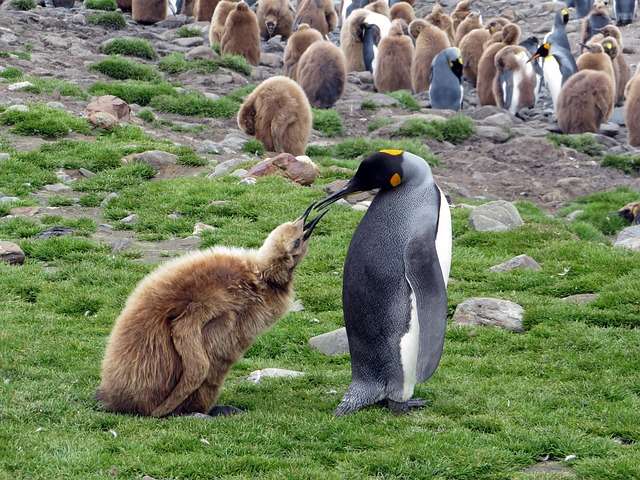
King penguins are known for their vibrant orange patches on their heads, necks, and throats. These colorful markings play a role in social and mating behaviors. The bright orange patches attract potential mates, and the intensity of the color can indicate the penguin’s health and fitness. King penguins also have sleek, silver-grey backs and black heads, creating a beautiful contrast.
Communication
These visual cues are vital for communication in their large colonies. The vibrant orange patches highlight the intricate ways animals use color for survival and reproduction.
Feeding and Hunting
King penguins are exceptional underwater hunters with remarkable diving and swimming abilities. They primarily feed on fish and squid, diving up to 300 meters deep. Equipped with streamlined bodies and powerful flippers, they can swim up to 12 kilometers per hour. Their excellent vision helps them spot prey underwater. King penguins can stay submerged for up to 10 minutes, giving them time to hunt. Their diving skills are crucial for finding food, especially during the breeding season. King penguins are one of the most proficient predators in the ocean.
The Little Blue Penguin
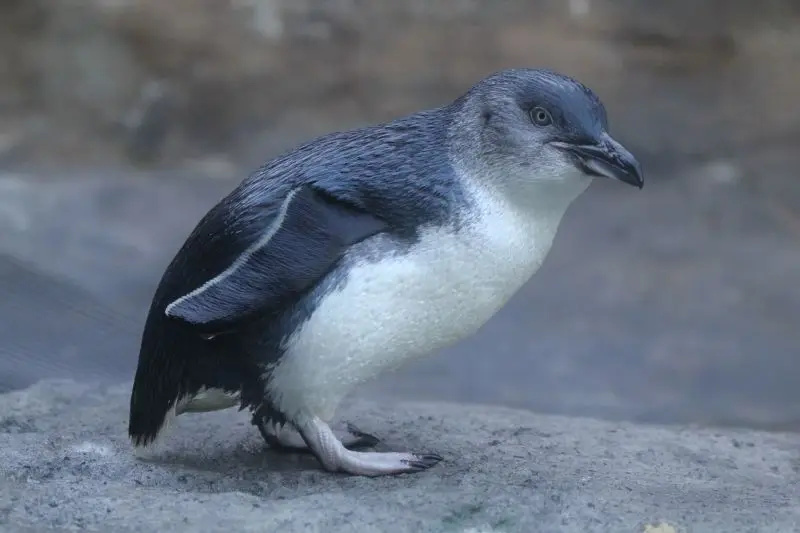
The little blue penguin, also known as the fairy penguin, is known for its blue feathers, which give the penguin a charming look. The blue color comes from microscopic structures in the feathers that reflect blue light. This beautiful coloration provides some camouflage while swimming.
Camouflage and Visual Adaptations
The blue feathers help them blend with the water’s surface. Little blue penguins are the smallest penguin species, about 30 centimeters tall. Their blue plumage and lively behavior make them a delight to observe, and their blue feathers are an essential adaptation for survival.
Nesting and Social Behavior
Despite their small size, little blue penguins are tough and resourceful. Standing just about 30 centimeters tall, these penguins face many challenges, from harsh weather to predators. However, their resilience helps them thrive. Little blue penguins often nest in burrows or under rocks, providing shelter for their chicks. They are strong swimmers, traveling long distances to find food like small fish, squid, and crustaceans. Their agile swimming helps them evade predators. Little blue penguins are social creatures, often forming tight-knit colonies. Their ability to work together and their determined nature make them a fascinating species.
Want to learn more about the different penguin species?
If you enjoyed learning about these unique penguin species, don’t forget to check out The Ultimate Penguin Book for Kids. It’s cram-packed full of astonishing penguin facts, photos and much more. Order your copy today.
And don’t forget to check out our YouTube channel where we post weekly animal fun fact videos! It’s a lot of fun, so we hope to see you there.





